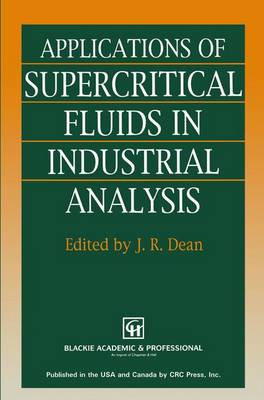the continued search for rapid, efficient and cost-effective means of analytical measurement has introduced supercritical fluids into the field of analytical chemistry. Two areas are common: supercritical fluid chromatography and supercritical fluid extraction. Both seek to exploit the unique properties of a gas at temperatures and pressures above the critical point. The most common supercritical fluid is carbon dioxide employed because of its low critical temperature (310C), inertness, purity, non-toxicity and cheapness. Alternative supercritical fluids are also used and often in conjunction with modifiers. The combined gas-like mass transfer and liquid-like solvating characteristics have been used for improved chromatographic separation and faster sample preparation. Supercritical fluid chromatography (SFC) is complementary to gas chromatography (GC) and high performance liquid chromatography (HPLC) providing higher efficiency than HPLC, together, with the ability to analyse thermally labile and high molecular weight analytes. Both packed and open tubular columns can be employed, providing the capability to analyse a wide range of sample types.
In addition, flame ionization detection can be used thus providing "universal" detection. The separation of complex mixtures by chromatography provides an effective means of identifying individual components. However, as with most techniques, it is the sample preparation which is both time and labour intensive. Traditionally, Soxhlet extraction has been employed but this has several disadvantages when extracting compounds of low and medium polarity using liquid solvents. Extractions are time consuming,. relatively unselective and use large amounts of hazardous solvents, so that further cleanup is usually necessary. Furthermore, after extraction and cleanup steps, the solution must usually be concentrated by evaporation prior to introduction into a chromatograph. Supercritical fluid extraction offers an elegant alternative to the currently applied extraction procedures. The ability of supercritical fluids to deposit extractants by simple depressurisation and/or cryogenic focusing means that solvent concentration can be done quickly and without heat or vacuum. These latter point are particularly important when one is seeking preservation of sensitive analytes.
This text therefore seems appropriate at this stage to review the current situation regarding supercritical fluids in analytical chemistry and, to consider the future possibilities to which they may be applied.
- ISBN10 0751400572
- ISBN13 9780751400571
- Publish Date August 1993
- Publish Status Active
- Publish Country NL
- Publisher Springer
- Imprint Kluwer Academic Publishers
- Format Hardcover
- Pages 240
- Language English
